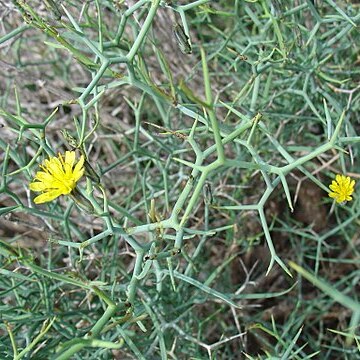Annual to perennial herbs, sometimes stoloniferous, branching or not. Hairs ±lacking. Leaves predominantly basal. Inflorescences solitary or cymose. Capitula pedunculate; involucral bracts multiseriate. Florets: ligule yellow. Achenes homomorphic, not or hardly compressed, unbeaked. Pappus of bristles, ?persistent; bristles scabridulous, uniform within pappus (in Australia).
Achenes pale-brown to black, subterete or somewhat angular, or compressed, sometimes apically attenuate or beaked, ribbed; ribs 5-many, uniformly narrow or somewhat inflated, smooth or muricate, glabrous.
Florets few to many, yellow, or the ligule sometimes purplish or red outside; anthers sagittate at the base with the auricles shortly setaceous-acuminate; style branches long slender, sweeping hairs long.
Leaves cauline and alternate, or radical and rosulate, entire or sinuate-dentate to runcinate-pinnatipartite, often acicular-denticulate on the margins.
Capitula few to numerous, subsessile or shortly stalked, often in lax irregular corymbs, sometimes solitary, or in clusters along the branches.
Phyllaries 2-several-seriate, becoming ± swollen and corky towards the base; the innermost subequal, usually greatly exceeding the outer.
Annual perennial or biennial herbs (spiny subshrubs), glabrous, with or without stems, sometimes caespitose, occasionally stoloniferous.
Pappus many-seriate, of setae only or of setae intermixed with numerous down-like hairs.
Stems or flowering stalks 1-several, branching above or simple.
Involucres narrowly cylindric-campanulate.
Receptacle epaleate.

